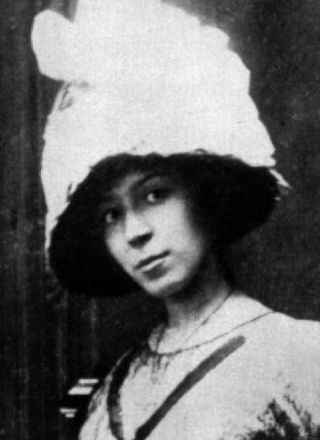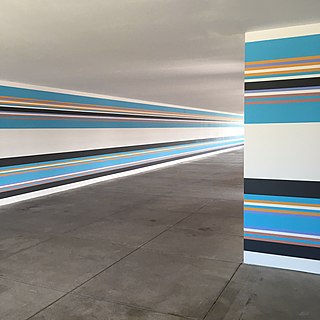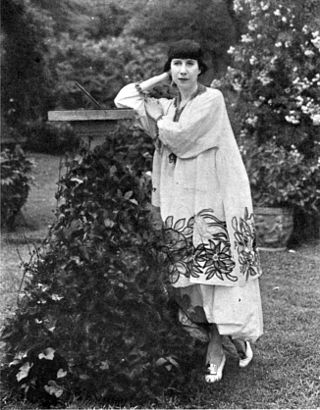
Berthe Marie Pauline Morisot was a French painter and a member of the circle of painters in Paris who became known as the Impressionists.

Mary Stevenson Cassatt was an American painter and printmaker. She was born in Allegheny, Pennsylvania, but lived much of her adult life in France, where she befriended Edgar Degas and exhibited with the Impressionists. Cassatt often created images of the social and private lives of women, with particular emphasis on the intimate bonds between mothers and children.

Pierre-Auguste Renoir was a French artist who was a leading painter in the development of the Impressionist style. As a celebrator of beauty and especially feminine sensuality, it has been said that "Renoir is the final representative of a tradition which runs directly from Rubens to Watteau."

Jean-Auguste-Dominique Ingres was a French Neoclassical painter. Ingres was profoundly influenced by past artistic traditions and aspired to become the guardian of academic orthodoxy against the ascendant Romantic style. Although he considered himself a painter of history in the tradition of Nicolas Poussin and Jacques-Louis David, it is his portraits, both painted and drawn, that are recognized as his greatest legacy. His expressive distortions of form and space made him an important precursor of modern art, influencing Picasso, Matisse and other modernists.

Marie Laurencin was a French painter and printmaker. She became an important figure in the Parisian avant-garde as a member of the Cubists associated with the Section d'Or.

The absence of women from the canon of Western art has been a subject of inquiry and reconsideration since the early 1970s. Linda Nochlin's influential 1971 essay, "Why Have There Been No Great Women Artists?", examined the social and institutional barriers that blocked most women from entering artistic professions throughout history, prompted a new focus on women artists, their art and experiences, and contributed inspiration to the Feminist art movement. Although women artists have been involved in the making of art throughout history, their work, when compared to that of their male counterparts, has been often obfuscated, overlooked and undervalued. The Western canon has historically valued men's work over women's and attached gendered stereotypes to certain media, such as textile or fiber arts, to be primarily associated with women.

Marie-Denise Villers was a French painter who specialized in portraits.

Joseph-Siffred Duplessis was a French painter known for the clarity and immediacy of his portraits.

Florine Stettheimer was an American modernist painter, feminist, theatrical designer, poet, and salonnière.

Marie-Guillemine Benoist, born Marie-Guillemine de Laville-Leroux, was a French neoclassical, historical, and genre painter.

Pauline Auzou was a French painter and art instructor, who exhibited at the Paris Salon and was commissioned to make paintings of Napoleon and his wife Marie Louise, Duchess of Parma.

Anne Vallayer-Coster was a major 18th-century French painter best known for still lifes. She achieved fame and recognition very early in her career, being admitted to the Académie Royale de Peinture et de Sculpture in 1770, at the age of twenty-six.

Marie-Victoire Lemoine was a French classicist painter.

Constance Marie Charpentier was a French painter. She specialized in genre scenes and portraits, mainly of children and women. She was also known as Constance Marie Blondelu.
Césarine Henriette Flore Davin-Mirvault was a French artist and painter. She studied under Suvée, David and learned to paint miniatures from Jean-Baptiste Jacques Augustin.

Marie-Françoise Constance Mayer La Martinière was a French painter of portraits, allegorical subjects, miniatures and genre works. She had "a brilliant but bitter career."

Little Girl in a Blue Armchair is an 1878 oil painting by the American painter, printmaker, pastelist, and connoisseur Mary Cassatt. It is in the collection of the National Gallery of Art, Washington D.C. Edgar Degas made some changes in the painting.

Charles-Joseph Traviès de Villers, also known simply as Traviès, was a Swiss-born French painter, lithographer, and caricaturist whose work appeared regularly in Le Charivari and La Caricature. His Panthéon Musical was one of the most famous and widely reproduced musical caricatures of the 19th century. His younger brother was the painter and illustrator Édouard Traviès.

Isaac Dudley Fletcher was an American businessman, art collector and museum benefactor.

Anne Guéret (1760–1805), known as Mlle Guéret the Younger, was a French painter who was active at the end of the 18th century and the beginning of the 19th century. Anne and her sister Louise Catherine Guéret were orphaned as children but were adopted by the dramatist and librettist Michel-Jean Sedaine. He introduced them to the painters Henri-Pierre Danloux and Jacques-Louis David who gave them art lessons. In 1793 Anne made her Salon debut. She continued to exhibit in Salons until 1801 presenting mainly portraits.



















